Archives
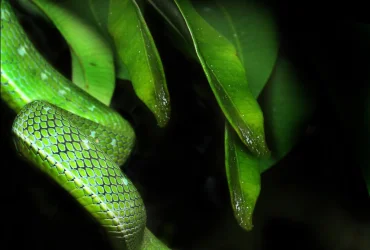 v11i2.293
v11i2.293ISSN: 1800-427X (printed)
eISSN: 1800-427X (online)
DOI:10.47605/tapro.v11i2.293
Submitted date: 28 March 2022
Accepted date: 16 November 2022
Published date: 22 November 2022
Pp. 119–121.
Seaweed (macroalgae) diversity on the Dikwella coast, Southern Sri Lanka
M.L.I. De Silva*, M.S. Gunasinghe, P.H. Liyanagedara, M.A.S. Ranjula, H.M.S.M Herath, N. I. Bamunuarachchi & W.A.A.D.L Wickramasinghe
*Corresponding author. E-mail: ninelawlis1@gmail.com
Seaweeds are photosynthetic and macroscopic eukaryotic organisms found in marine and brackish water environments. They are one of the major primary producers in marine ecosystems. They are also important in maintaining coastal biodiversity by interacting with other organisms. In addition to their biological and ecological importance, seaweeds are economically significant. Data from the Food and Agriculture Organization (FAO) shows that a total of 35 million tonnes of seaweed were produced through cultivation in 2019 and 97% of this was from East Asia. China was ranked as the top producer. In contrast to all the positives, there are a few negative impacts of seaweeds; including biofouling, habitat invasion, and unwanted beach drift.
Section Editor: H.K.S de Zoysa
eISSN: 1800-427X (online)
DOI:10.47605/tapro.v11i2.293
Submitted date: 28 March 2022
Accepted date: 16 November 2022
Published date: 22 November 2022
Pp. 119–121.
Seaweed (macroalgae) diversity on the Dikwella coast, Southern Sri Lanka
M.L.I. De Silva*, M.S. Gunasinghe, P.H. Liyanagedara, M.A.S. Ranjula, H.M.S.M Herath, N. I. Bamunuarachchi & W.A.A.D.L Wickramasinghe
*Corresponding author. E-mail: ninelawlis1@gmail.com
Seaweeds are photosynthetic and macroscopic eukaryotic organisms found in marine and brackish water environments. They are one of the major primary producers in marine ecosystems. They are also important in maintaining coastal biodiversity by interacting with other organisms. In addition to their biological and ecological importance, seaweeds are economically significant. Data from the Food and Agriculture Organization (FAO) shows that a total of 35 million tonnes of seaweed were produced through cultivation in 2019 and 97% of this was from East Asia. China was ranked as the top producer. In contrast to all the positives, there are a few negative impacts of seaweeds; including biofouling, habitat invasion, and unwanted beach drift.
Section Editor: H.K.S de Zoysa
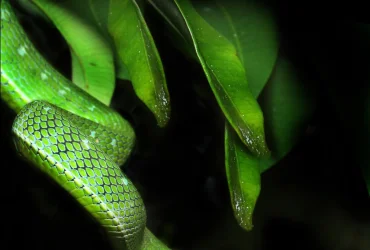 v11i2.292
v11i2.292ISSN: 1800-427X (printed)
eISSN: 1800-427X (online)
DOI:10.47605/tapro.v11i2.292
Submitted date: 30 January 2022
Accepted date: 30 October 2022
Published date: 22 November 2022
Pp. 114–118, Pls. 35–36.
On the critically endangered red teruntum mangrove (Lumnitzera littorea)
S. Madhushanka*, K.B. Ranawana & M. Prassanna
*Corresponding author. E-mail: shashimadhushanka2@gmail.com
Mangroves are ecologically important forest communities along tropical and subtropical coasts with 70 woody species belonging to about 30 genera in 20 families. Lumnitzera littorea (Jack) Voigt of the Family Combretaceae is a critically endangered true mangrove species indigenous to Sri Lanka. This species is distributed widely on the east coast of Africa, northern Australia, Polynesia, and tropical Asian countries. It is only known from a few locations in Sri Lanka. Therefore, in Sri Lanka L. littorea has been identified as a critically endangered (CR) species in 2007, 2012, and 2020 National Red Lists.
Section Editor: Jean W.H. Yong
eISSN: 1800-427X (online)
DOI:10.47605/tapro.v11i2.292
Submitted date: 30 January 2022
Accepted date: 30 October 2022
Published date: 22 November 2022
Pp. 114–118, Pls. 35–36.
On the critically endangered red teruntum mangrove (Lumnitzera littorea)
S. Madhushanka*, K.B. Ranawana & M. Prassanna
*Corresponding author. E-mail: shashimadhushanka2@gmail.com
Mangroves are ecologically important forest communities along tropical and subtropical coasts with 70 woody species belonging to about 30 genera in 20 families. Lumnitzera littorea (Jack) Voigt of the Family Combretaceae is a critically endangered true mangrove species indigenous to Sri Lanka. This species is distributed widely on the east coast of Africa, northern Australia, Polynesia, and tropical Asian countries. It is only known from a few locations in Sri Lanka. Therefore, in Sri Lanka L. littorea has been identified as a critically endangered (CR) species in 2007, 2012, and 2020 National Red Lists.
Section Editor: Jean W.H. Yong
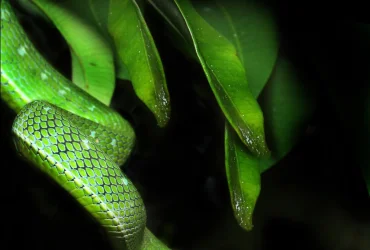 v11i2.291
v11i2.291ISSN: 1800-427X (printed)
eISSN: 1800-427X (online)
DOI:10.47605/tapro.v11i2.291
Submitted date: 9 May 2022
Accepted date: 30 October 2022
Published date: 22 November 2022
Pp. 111–113.
Scent rubbing in carnivore species at Gavier Lake, Gujarat, India
K. Trivedi*, C. Patel & A. Desai
*Corresponding author. E-mail: krunal.trivedi.7567@gmail.com
Scents are one of the most common means of animal communication. Some animals use scent communication for many purposes including determining age and sex, marking their territories, and finding mates. Scent rubbing is a poorly understood way of marking in which animals rub their bodies against a variety of surfaces, many of which have intense odours. Individuals collapse their forelegs then push forward with their hind legs, rubbing their face, neck, and back onto the destination of the scent in the most well-known occurrences among carnivores. Most commonly, they put their own scent on the object while infusing the object’s scents onto their bodies. Faeces of other animals, meat, intestinal contents and insecticide are among the substances that elicit scent-rubbing. As a result, the subject's pelages are infused with the odour of these substances. Odours produced by sweat glands, urine, faeces and vaginal secretions often induce this behaviour, which is prominent in carnivore species. They scent rub as an olfactory communication method, releasing chemical odours to increase the chances of being recognised by conspecifics. Canids and other carnivores are well known for rubbing themselves on various scents, while smaller carnivores have been shown to increase caution and alter their feeding behaviour when exposed to the scent of larger carnivores .
Section Editor: Lee Harding
eISSN: 1800-427X (online)
DOI:10.47605/tapro.v11i2.291
Submitted date: 9 May 2022
Accepted date: 30 October 2022
Published date: 22 November 2022
Pp. 111–113.
Scent rubbing in carnivore species at Gavier Lake, Gujarat, India
K. Trivedi*, C. Patel & A. Desai
*Corresponding author. E-mail: krunal.trivedi.7567@gmail.com
Scents are one of the most common means of animal communication. Some animals use scent communication for many purposes including determining age and sex, marking their territories, and finding mates. Scent rubbing is a poorly understood way of marking in which animals rub their bodies against a variety of surfaces, many of which have intense odours. Individuals collapse their forelegs then push forward with their hind legs, rubbing their face, neck, and back onto the destination of the scent in the most well-known occurrences among carnivores. Most commonly, they put their own scent on the object while infusing the object’s scents onto their bodies. Faeces of other animals, meat, intestinal contents and insecticide are among the substances that elicit scent-rubbing. As a result, the subject's pelages are infused with the odour of these substances. Odours produced by sweat glands, urine, faeces and vaginal secretions often induce this behaviour, which is prominent in carnivore species. They scent rub as an olfactory communication method, releasing chemical odours to increase the chances of being recognised by conspecifics. Canids and other carnivores are well known for rubbing themselves on various scents, while smaller carnivores have been shown to increase caution and alter their feeding behaviour when exposed to the scent of larger carnivores .
Section Editor: Lee Harding
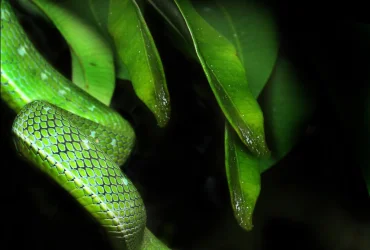 v11i2.290
v11i2.290ISSN: 1800-427X (printed)
eISSN: 1800-427X (online)
DOI:10.47605/tapro.v11i2.290
Submitted date: 20 March 2022
Accepted date: 29 October 2022
Published date: 22 November 2022
Pp. 109–110, Pl. 34.
Biofluorescence in the masked palm civet (Paguma larvata)
A. Borzée* & Z.Q. Wang
*Corresponding author. E-mail: amaelborzee@gmail.com
Biofluorescence has come to general public attention over the last decade with the industrial production of “black lights”. While numerous reports on biofluorescence have become available for some groups of species such as invertebrates, birds, amphibians, and reptiles, there are fewer reports on fluorescence in mammals. So far, ultraviolet fluorescence is known from a few mammal species only, including flying squirrels, mice, Chinese pangolins, Virginia opossums and other didelphid marsupials, springhares, African pygmy hedgehogs, European hedgehogs, and platypuses. The fluorescence is, however, not produced by the animal itself in the case of hedgehogs, but by commensal bacteria. Green fluorescence can also be expressed by transgenic animals, including non-human primates, and the trait can become inheritable.
Section Editor: Lee Harding
eISSN: 1800-427X (online)
DOI:10.47605/tapro.v11i2.290
Submitted date: 20 March 2022
Accepted date: 29 October 2022
Published date: 22 November 2022
Pp. 109–110, Pl. 34.
Biofluorescence in the masked palm civet (Paguma larvata)
A. Borzée* & Z.Q. Wang
*Corresponding author. E-mail: amaelborzee@gmail.com
Biofluorescence has come to general public attention over the last decade with the industrial production of “black lights”. While numerous reports on biofluorescence have become available for some groups of species such as invertebrates, birds, amphibians, and reptiles, there are fewer reports on fluorescence in mammals. So far, ultraviolet fluorescence is known from a few mammal species only, including flying squirrels, mice, Chinese pangolins, Virginia opossums and other didelphid marsupials, springhares, African pygmy hedgehogs, European hedgehogs, and platypuses. The fluorescence is, however, not produced by the animal itself in the case of hedgehogs, but by commensal bacteria. Green fluorescence can also be expressed by transgenic animals, including non-human primates, and the trait can become inheritable.
Section Editor: Lee Harding
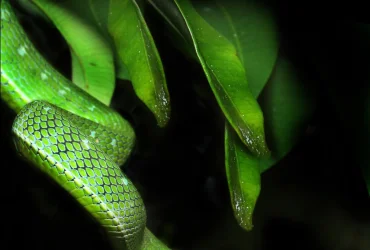 v11i2.289
v11i2.289ISSN: 1800-427X (printed)
eISSN: 1800-427X (online)
DOI:10.47605/tapro.v11i2.289
Submitted date: 29 May 2022
Accepted date: 29 October 2022
Published date: 22 November 2022
Pp. 107–108.
Northernmost distribution of Indian brown mongoose (Herpestes fuscus)
N. Singh*, R. Govekar & A. Pathak
*Corresponding author. E-mail: nishanicky1210@gmail.com
The Indian brown mongoose, Herpestes fuscus is among the six species of mongoose found in India. The species can be distinguished from other species of mongoose by its dark brown fur, black legs and thick, furry and conical tail. Brown mongoose has a restricted and disjunct distribution, with two populations of the nominate H. f. fuscus in the Western Ghats (Karnataka and Kerala) in Southern India and three other subspecies along the western coast of Sri Lanka. In southern India, brown mongoose has been recorded in wet evergreen forests of the Western Ghats from altitudes ranging between 450 to over 2,000 m a.s.l. Recently it has been recorded from Tadoba-Andheri Tiger Reserve, about 160 km south of Pench, also in Maharashtra.
Section Editor: Lee Harding
eISSN: 1800-427X (online)
DOI:10.47605/tapro.v11i2.289
Submitted date: 29 May 2022
Accepted date: 29 October 2022
Published date: 22 November 2022
Pp. 107–108.
Northernmost distribution of Indian brown mongoose (Herpestes fuscus)
N. Singh*, R. Govekar & A. Pathak
*Corresponding author. E-mail: nishanicky1210@gmail.com
The Indian brown mongoose, Herpestes fuscus is among the six species of mongoose found in India. The species can be distinguished from other species of mongoose by its dark brown fur, black legs and thick, furry and conical tail. Brown mongoose has a restricted and disjunct distribution, with two populations of the nominate H. f. fuscus in the Western Ghats (Karnataka and Kerala) in Southern India and three other subspecies along the western coast of Sri Lanka. In southern India, brown mongoose has been recorded in wet evergreen forests of the Western Ghats from altitudes ranging between 450 to over 2,000 m a.s.l. Recently it has been recorded from Tadoba-Andheri Tiger Reserve, about 160 km south of Pench, also in Maharashtra.
Section Editor: Lee Harding
Hubungi Kami
The ultimate aim of the journal is to provide an effective medium for communication of the latest and best scientific information.
Copyright © 2020 Taprobanica. All Rights Reserved
Jasa Pembuatan Website by IKT




